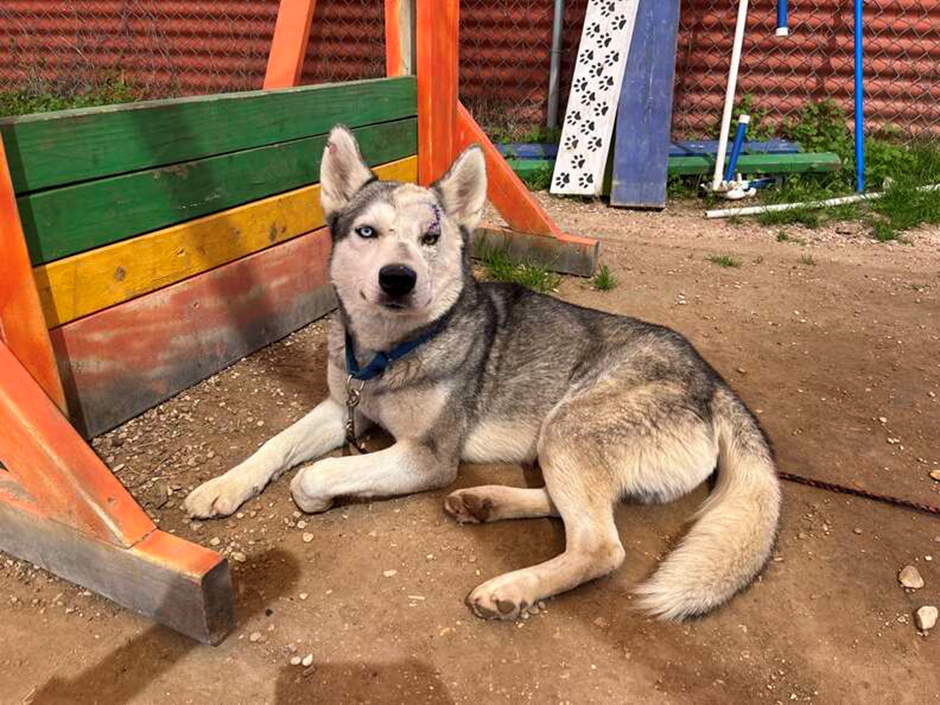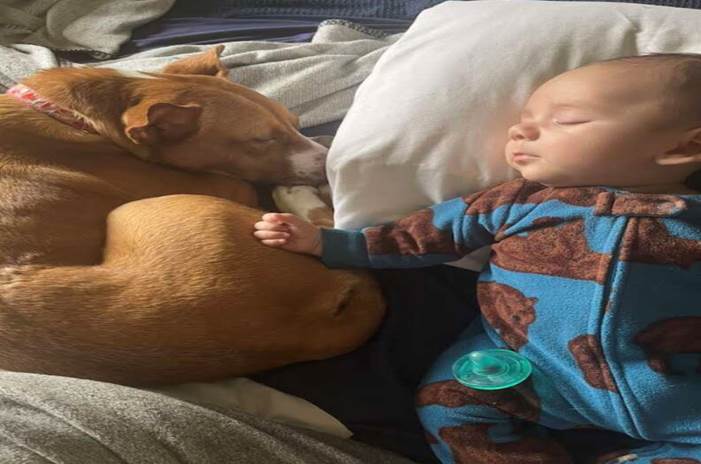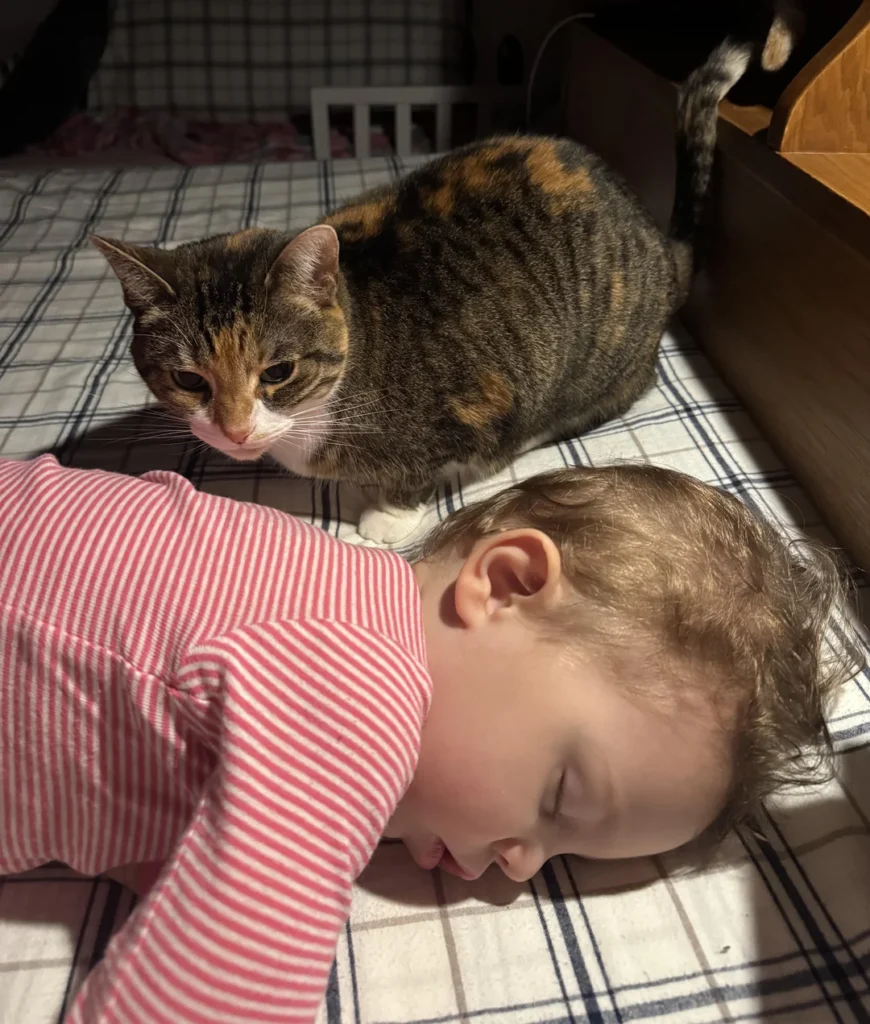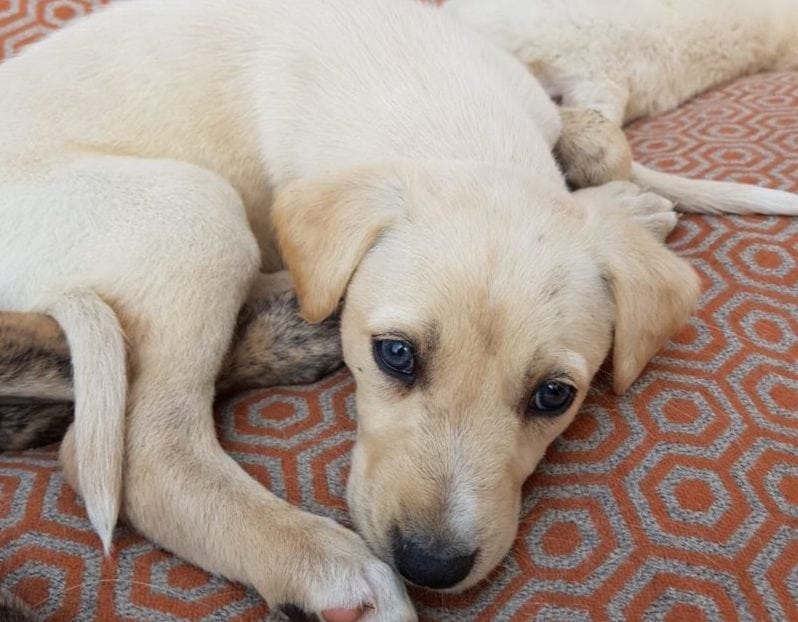The Gentle Giant: How One Husky’s Life Was Saved By His Smallest Advocate
Kodiak was a study in magnificent sorrow. He was a purebred Siberian Husky, a massive, muscular dog with a thick, silver-grey coat and the striking, pale blue eyes that people so often admired—before they saw him in action. He was too big, too loud, too energetic, and ultimately, too much trouble. He had been surrendered twice in his three years of life, each time for reasons that boiled down to the same thing: the failure of his humans to meet his impossible needs. Now, he lived on a concrete slab in the back corner of the local shelter, a silent, resigned observer of the human parade. His kennel card, once bright white, was dog-eared and stained with smudges of hopelessness. He no longer rushed the fence when people walked by. He simply lay down, his striking blue eyes dulled to a weary pewter, his head resting heavily on his paws. Kodiak was convinced he was unworthy of rescue, having failed two families already. His spirit was broken. His great, wolf-like body held an ache of loneliness that the shelter staff recognized as kennel depression—a deep-seated apathy that meant he was losing his will to connect. The Advocate Arrives The day the Miller family walked in, Kodiak didn’t lift his head. He heard the usual cacophony: the loud, eager barks of the smaller, more adoptable dogs, the nervous chatter of the parents, and the excited patter of children’s feet. Sarah and Ben Miller were there specifically looking for a new family member, something calm and perhaps medium-sized. They certainly weren’t looking for a high-energy, twice-failed, 80-pound Husky. But their three-year-old daughter, Ella, had other plans. Ella was a tiny human, a wisp of a girl with a mop of light brown hair and a singular, quiet intensity. She disregarded the yapping terriers and the bouncing retrievers. She walked slowly, deliberately, straight to Kodiak’s quiet corner. She didn’t make a sound. She simply stopped at the chain-link fence and stared. Kodiak slowly lifted his massive head, his blue gaze meeting her own. The adults held their breath, waiting for the Husky’s infamous high-pitched howl or his typical aloof dismissal. Instead, a strange, profound stillness settled between the dog and the child. Ella then did the one thing no adult had tried: she sat down on the floor, cross-legged, directly in front of his kennel door. She rested her little chin on the wooden bar and smiled—not the loud, excited smile of a child wanting a toy, but a soft, warm, all-knowing smile of pure acceptance. Kodiak’s tail gave one slow, tentative thump against the concrete. It was the first sign of life he had shown in days. The Unbreakable Bond Sarah and Ben were hesitant, but the shelter staff were astonished. Kodiak had chosen them. The usually reserved, anxious dog—the “unwanted” one—was behaving with a tenderness they hadn’t seen before. During the required meet-and-greet, when Kodiak was let into a small run with the family, the huge dog immediately sought out the smallest human. He didn’t jump or rush. He lowered his body, settling down patiently while Ella walked right up to him. She knelt down, placing both her tiny hands gently on his massive, fluffy head. The contrast was absurd and beautiful: the massive, gentle giant and his diminutive, fearless advocate. Kodiak looked perfectly at ease, his deep blue eyes gazing calmly out as Ella provided the soft, focused attention he had always craved. The Millers adopted Kodiak that afternoon. They didn’t adopt a Husky; they adopted Ella’s soulmate. Life at the Miller house quickly proved the strength of their connection. Kodiak was a handful, but only when Ella was out of sight. When she was near, his focus became singular. He was her shadow, her protector, and her anchor. One evening, Ben came into the living room to find them completely settled into their new, permanent routine. Kodiak was lying sprawled on the warm wooden floor, his head resting heavily on his front paws. Ella was nestled against his side, her small body curled into the vast, comforting warmth of his fur. They were deep in quiet conversation—Ella babbling softly, and Kodiak emitting soft, responsive sighs. Kodiak was no longer lost. He had a purpose: to guard this tiny, precious human who had seen past his size and his failures, and straight into his good heart. The Purest Form of Joy As the months passed, the transformation was complete. Kodiak grew even bigger, his coat magnificent and his energy channeled into dedicated, protective observation. Ella grew too, but her connection to the dog only deepened. Their bond became the stuff of legend in the neighborhood. They were inseparable, often seen on slow walks where Ella would lead the giant dog with a feather-light grip on his leash. In their quiet moments at home, their mutual affection was a profound, daily ritual. In the mornings, Kodiak would greet Ella with a soft, happy vocalization—a sound far different from the anxious howls of his past. Ella would return the favor with a hug that involved her wrapping her arms as far around his huge neck as they could reach. The joy they found together was palpable, simple, and unrestrained. In one close-up moment captured by Sarah, Ella is leaning her cheek right against Kodiak’s furry face, her smile bright and unburdened.Kodiak’s expression is one of utter contentment—his mouth slightly open in a soft, easy dog-smile, his eyes gentle and completely devoted. He had found his purpose, his peace, and his true home. Kodiak the giant, unwanted Husky had been saved, not by professional training or perfect circumstances, but by the uncomplicated, unfiltered love of the one tiny human who needed him just as much as he needed her. He was no longer a failed rescue; he was Ella’s gentle giant, and finally, he was home.
The Gentle Giant: How One Husky’s Life Was Saved By His Smallest Advocate Read More »





